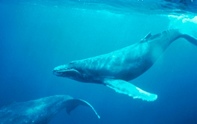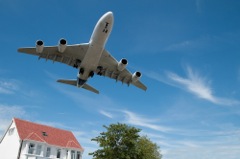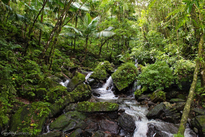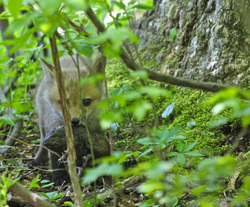
Noise Pollution

Noise pollution is an unwanted or disturbing sound
which can interfere with normal activities for humans and wildlife, such as sleeping, conversation, reproduction, communication, or disrupt or diminish one's quality of life. Noise pollution can come from many sources, such as automobiles, motorcycles, aircraft, ships, trucks, buses, jet planes, construction equipment, electrical machinery, lawn mowers and leaf blowers, to name a few. Excessive noise pollution, from the city streets to the oceans' commercial shipping traffic, can have harmful effects on the humans, plants, animals, trees and marine life constantly exposed to it. Long-term exposure to traffic noise may lead to coronary heart disease and accounts for approximately 210,000 deaths in Europe each year. Learn more.
Effects of Noise Pollution
Human Health and Welfare

According to the
World Health Organization, excessive noise seriously harms human health and interferes with people’s daily activities at school, at work, at home and during leisure time. It can disturb sleep, cause cardiovascular and psychophysiological effects,
cause heart attacks, reduce performance and provoke annoyance responses and changes in social behaviour. The overlooked threat of
noise pollution can cause a number of short- and long-term health problems, such as sleep disturbance, cardiovascular effects, poorer work and school performance, hearing impairment and more. Even low-level office noise can increase health risks and lower task motivation for workers,
according to Cornell researchers. Children, night workers, those who cannot afford to live in quiet residential areas, chronically ill and elderly people
are more vulnerable to noise. Noise pollution at night can lead to an
increase in medical visits and spending on sleeping pills, which affects families’ budgets and countries’ health expenditure. According to the
WHO, impairment of early childhood development and education caused by noise may have lifelong effects on academic achievement and health.
Noise pollution can even lead to deaths from heart disease.
Studies and statistics on the effects of chronic exposure to aircraft noise on children have found consistent evidence that noise exposure harms cognitive performance, consistent association with impaired well-being and motivation to a slightly more limited extent and moderate evidence of effects on blood pressure and catecholamine hormone secretion.
Learn more.
Plants and Trees
Human noise can have ripple effects on long-lived plants and trees
that can last for decades even after the sources of noise subside. Many plants and trees rely on birds and other animals to deliver pollen from one flower or tree to the next, or to disperse their seeds, but
many animals are adapting to the noise by changing their behavior or moving to quieter locales. Consequently,
noise pollution is altering the landscape of plants and trees, which depend on noise-affected animals to pollinate them and spread their seeds.
Some plants do worse in noisy areas while others seem to do better, depending on how the community of creatures around them changes. The
ripple effects can be far reaching and long lasting, especially for trees, which often take decades to grow from seedlings into adults.
Learn more.
Benefits include hummingbirds preferring noisy sites
because the western scrub jay, which preys on their nestlings, tends to avoid those noisy areas which
increases the pollen transfer of hummingbird-pollinated plants, such as scarlet gilia, in the noisy sites. However,
plants or trees such as the pinyon pine, might experience a decline
because the animals or birds that are counted on for pollination shy away from the noise and can lead to a decline in tree or plant populations. These disturbances in a species that is vital for the community is going to have cascading effects throughout the ecosystem potentially leading to large-scale changes due to the responses of one or two important species.
Learn more.
Animals
By changing the fine-tuned balance between predator and prey detection and avoidance and interfering with the use of sounds in communication, especially in relation to reproduction and navigation,
noise can have a detrimental effect on animals, increasing their risk of death.
Hearing loss and rapid increase in heart rate
are some of the ill-effects of noise pollution on animals.
High intensity sound induces fear, which can force species to abandon their habitat.
In loud places, studies have found
that some birds have to sing at higher frequencies, bats and owls can have trouble finding prey, terrestrial insectivores lose habitat by avoiding areas with roads and construction, frogs can struggle to find mates, a
population's evolutionary trajectory can be altered
by sapping resources normally devoted to other activities and thus lead to profound genetic and evolutionary consequences,
various species experiencing hearing loss
and the
reduction of usable habitat that noisy areas may cause, which in the case of endangered species may be part of the path to extinction.
Learn more.
Noise pollution is becoming so ubiquitous that it is
threatening biodiversity
- even the protected animals living in National Parks in the U.S. are unable to escape the disturbing sounds as they are
exposed to chronic levels of noise, which are audible during
more than one quarter of daylight hours at more than half of 55 sites in 14 National Parks
and at
12 sites, anthropogenic noise can be heard more than half the time.
Learn more.
Marine Life

Photo: NOAA's National Ocean Service, Flickr Creative Commons | Click for source
As the
Oceanic Preservation Society states, "Sound is to underwater creatures as sight is to humans." Man-made noise is disrupting life below the surface where almost every living creature
depends on sound as a primary sense for mating, communicating, hunting, and survival. Since the mid-1960s, the amount of commercial vessel traffic in Earth's oceans
has nearly doubled, resulting in an almost 16-fold increase in background noise intensity. The rising level of
intense underwater sound
produced by industrial ocean noise,
oil and gas exploration, shipping traffic, seismic surveys, military sonar and other man-made sources can
afflict marine life with a lethal condition commonly known as 'the Bends'
and poses a
significant long-term threat to whales, dolphins, fish and other marine species
from the individual animal's well-being, right through to its reproduction, communication, migration and even survival of the species.
The "auditory scene" derived from sounds provides marine animals with a three dimensional view of the world
and extends far beyond the visual scene.
Artificial noise in the environment that alters the marine organism's ability to detect and analyze its auditory scene
has the potential to cause a detrimental impact on the life of the animal as well as the survival of the species. Even
short exposures to low-intensity, low-frequency sound can wreak havoc on the balance systems of squid, cuttlefish and octopi, but the impact of continuous, high-intensity noise pollution in the oceans could be devastating. Military sonar and ship engine noise can send a deafening tidal wave of noise for miles as
sound in the water travels five times faster than on land. Whales, dolphins and other marine mammals that have been caught in the wake of sonar
have died of cerebral hemorrhaging or intentionally beached themselves in a desperate attempt to avoid the ear-splitting resonance. Even
oil and gas surveys have been shown to damage fish and dramatically reduce catch rates.
Learn more.







